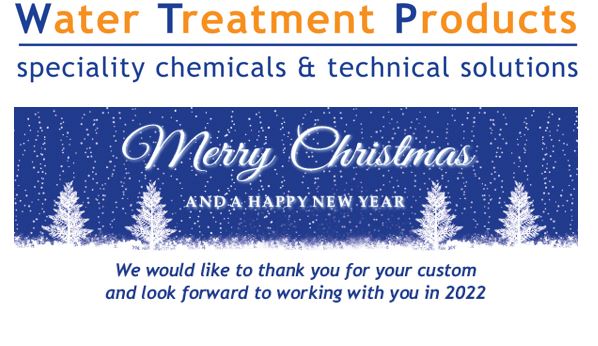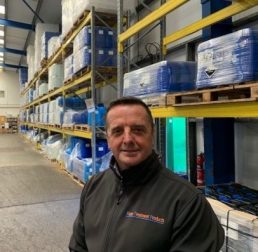
Types of Test Kits and their Effective Use and Maintenance
11th February 2021
The importance of testing water samples cannot be understated. Valuable information of systems and water quality can be obtained from thorough and regular testing. There are a multitude of different testing equipment available ranging from simple drop test based on titrations, comparator tests that use a specifically calibrated coloured disc and electronic meters such as pH and conductivity meters. It is therefore safe to say that the options of testing equipment available, and their user-friendly simplicity, allows users from a range of backgrounds to easily test water quality and obtain valuable information.
Broadly speaking current testing equipment can be divided into the following groups:
• Titration style test kits – also known as drop tests
• Comparator style test kits – using a colour comparison wheel
• Photometers – Colour relating directly to a unit of measure
• Electronic meters – such as pH meters and the like
Titration Style Test Kits – Drop Tests
Titration/titrimetric test kits, commonly known as drop tests, employ a simple system of colour change. A sample of known size (often given in the test kits methodology) is taken and an indicator is added. A titrant is added one drop at a time until the colour changes – the end point colour is given in the test kit methodology. Each drop of titrant added to achieve the colour change relates to a concentration of the parameters being measured.
For example, Total Alkalinity (M-Alkalinity) drop tests use a clear colour change from Blue to Yellow.
In drop tests the colour changes are normally very clear and obvious, contributing to the simplicity of the test kit. Below is a short list of example drop tests and the colour changes that can be expected.
• Alkalinity (Total) – Blue to Yellow
• Chloride – Yellow to Brown
• Nitrite – Red to Blue
• Total Hardness – Purple to Blue
• Zinc – Purple to Orange
Although simple to use, methodology provided must be fully understood and users should also be aware of interferences. It is equally important to ensure all test kit reagents are within their used by date and all equipment is kept clean to avoid contamination. Out of date reagents will lead to inaccurate results. This statement is true for any testing equipment.
Comparator Style Test Kit
Comparator test kits, as the name suggests, compare the colours of a known concentrations to sample. Most commonly this is done by having a colour wheel specific to the parameter and associated reagent. The user takes a defined sample amount and transfers it to two tubes, one tube is used for the blank (which takes into account any colour and turbidity in the same) and the other has specific reagents added. Once the reaction takes place the tubes are placed in the comparator with the colour wheel. The colour wheel is then rotated to best match the colour of the treated sample to a known concentration (printed on the disc). The user simply reads off the concentration.
Comparator kits are very easy to use and parts such as the colour discs can easily be swapped out for other parameters thus offering an easy way to carry minimal equipment for multiple tests.
Examples of comparator tests (not an exhaustive list) are as follows:
• Aluminium
• Copper
• Iron (Total and Dissolved)
• Molybdate
• Phosphate
Although there are many advantages for using a comparator such as ease of use, minimal equipment, speed of testing, there are some drawbacks. Namely, comparators rely on the user to interpret colours that are often quite similar (as concentration is expressed as a gradient of colour). Comparators require a certain level of light to be able to compare colours, which, in certain situations may be difficult.
Certain chemistries such as those used for Iron and Molybdate often have interferences. For example, Molybdate and pH interfere with Iron testing. Often these interferences and their subsequent work arounds are stated in the given methods, however for an inexperienced user it may cause issues.
Therefore it is vitally important that users familiarise themselves with methods, interferences, their solutions and also maintain the equipment and reagents found in test kits. Ensuring reagents are not expired and equipment is kept clean will contribute to good practice and the collection of good data.
Photometers
Photometers employ the same chemistries and technologies as comparator tests but take testing a step further by expressing the result digitally. There is one major advantage (providing methodologies are followed precisely) – the reduction in user error. Photometers are programmed with much higher resolutions for colour detection than the human eye can perceive. Negating variation which comes with the use of comparators helps provide more consistent and meaningful data.
Many photometers have data collection features that allow for data trending and manipulation (independently by the user) as well as being able to convert results from one format to another.
Similar interferences are found with photometer chemistry as with comparator chemistry. Being familiar with the devices functions and methods will contribute to good data collection. Always ensuring reagents are within date and equipment is kept damage free and clean will also ensure the collected data is valid and provides a good representation of the system being tested.
Electronic Meters – such as pH and Conductivity
Electronic meters are commonly used for testing pH as well as Total Dissolved Solids and Conductivity. Parameters such as Redox, Dissolved Oxygen and Glycol (Anti-freeze) can also be measured using an electronic meter.
Electronic meters provide a quick and easy method for testing parameters such as pH and Conductivity. There are many different designs of meters available but all employ the same techniques to derive the measured parameter. It is important to understand that more advanced meters will allow users to calibrate over multiple points to offer the best accuracy for measuring.
Meters are normally factory calibrated before use but should always be calibrated by the user regularly thus ensuring accuracy and longevity of the device. As per all testing equipment, ensuring devices are kept clean and in good working order (e.g. enough battery power, functioning screen etc…) as well as ensuring the correct calibration standards are used will contribute to good data collection.

